The Rise of Eco-Friendly and Sustainable Vacation Homes in Punta Cana
The Growing Popularity of Eco-Friendly Vacation Homes
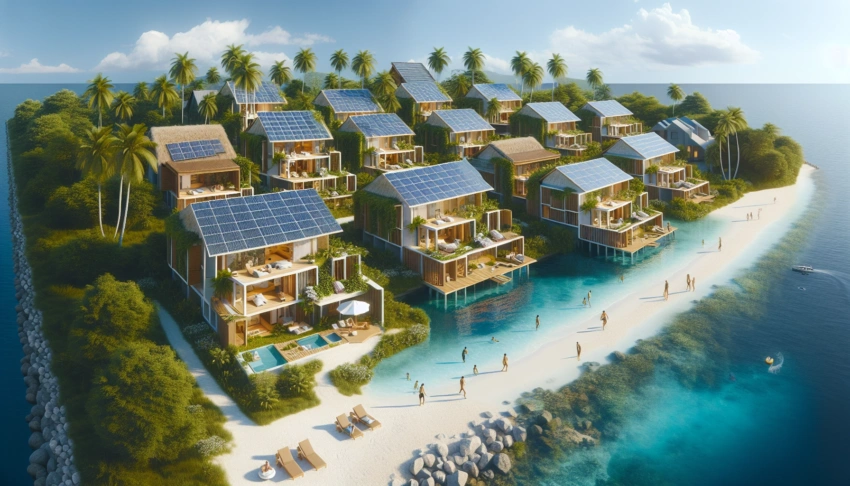
The Rise of Eco-Friendly and Sustainable Vacation Homes in Punta Cana
In recent years, eco-friendly vacation homes have seen a noticeable rise in popularity, particularly in tropical paradises like Punta Cana. This trend is largely attributed to a shift in consumer preferences towards sustainability and environmental responsibility. As vacationers become more conscious of their ecological footprint, the demand for sustainable accommodations continues to grow.
1. Environmental Awareness Among Tourists
Today’s travelers are increasingly aware of their environmental impact, and this consciousness significantly influences their accommodation choices. A 2023 survey by Booking.com revealed that 74% of travelers intend to stay at least once in an eco-friendly or green accommodation when looking to book a property. This growing trend is particularly pronounced among younger generations, such as Millennials and Gen Z, who prioritize sustainability in their travel decisions.
In Punta Cana, this shift is evident as more tourists seek out vacation homes that not only offer luxury and comfort but also minimize environmental impact. These eco-conscious travelers are attracted to properties that utilize renewable energy sources, promote biodiversity, and incorporate sustainable practices. The awareness extends beyond the accommodation itself; visitors are also keen on supporting local conservation efforts and community projects.
2. Benefits of Sustainable Luxury
Contrary to the misconception that sustainability compromises luxury, eco-friendly vacation homes in Punta Cana demonstrate that it is possible to enjoy opulence without harming the planet. These homes are designed with high-end amenities that cater to the discerning traveler while adhering to sustainable principles.
- Innovative Design: Many of these homes feature state-of-the-art architecture that maximizes natural light and ventilation, reducing the need for artificial lighting and air conditioning.
- Eco-Friendly Amenities: From organic linens to locally sourced, biodegradable toiletries, these homes ensure that luxury and sustainability go hand in hand.
By integrating sustainable practices, these homes offer a guilt-free indulgence, allowing guests to relish in the beauty and comfort of their surroundings while knowing they are contributing to a healthier planet.
3. The Role of Social Media
Social media platforms have played a pivotal role in amplifying the visibility and appeal of eco-friendly vacation homes. Influencers and travel bloggers often showcase these accommodations, highlighting their unique features and sustainable practices to a global audience.
Platforms like Instagram and Pinterest are replete with stunning visuals of these eco-friendly havens, inspiring travelers to consider sustainability in their vacation planning. The power of social media in shaping travel trends cannot be overstated; as more users share their experiences, the allure of eco-friendly homes continues to grow, driving further demand.
Our Apartments for Rent in Punta Cana

Bávaro White Sand 2BR Townhouse - Long Term Rental in Punta Cana
from $1700 night Read more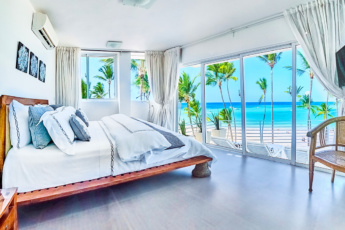
Condo for Rent in Punta Cana - Stunning Ocean View - Oreuga
from $400 night Read more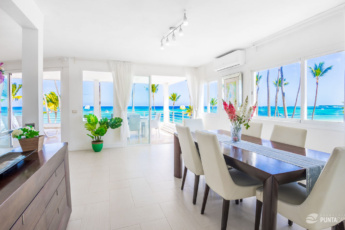
Beachfront Punta Cana Condo for Rent - Private Apartment with Stunning Oceanview, Bávaro, Los Corales
from $269 night Read more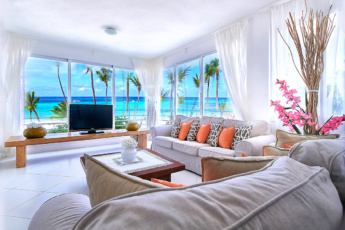
Dream Apartments for Rent in Punta Cana - Oreuga Ocean View Paradise
from $243 night Read moreKey Features of Sustainable Vacation Homes
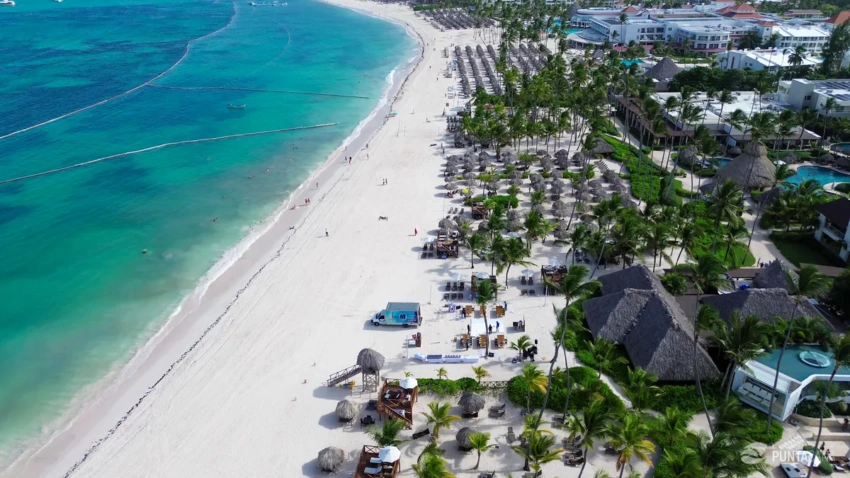
Aerial view of Punta Cana
Sustainable vacation homes in Punta Cana are not just a trend; they are a testament to how innovation and environmental consciousness can coexist to offer a luxurious yet eco-friendly living experience. These homes are designed with several key features that set them apart, ensuring minimal environmental impact while providing maximum comfort.
1. Sustainable Building Materials
The backbone of an eco-friendly vacation home is its construction. Using sustainable building materials is crucial in minimizing the carbon footprint and ensuring the longevity of the structure.
- Bamboo and Reclaimed Wood: Often utilized for their durability and rapid renewability, bamboo and reclaimed wood are popular choices. Bamboo grows quickly and can be harvested sustainably, while reclaimed wood provides a rustic charm and reduces the need for new lumber.
- Recycled Steel and Concrete: These materials are increasingly used in construction for their strength and reduced environmental impact. Recycled steel and concrete reduce waste and carbon emissions associated with producing new materials.
- Eco-Friendly Insulation: Materials such as cellulose, made from recycled paper, and sheep’s wool provide excellent insulation while being biodegradable and non-toxic.
2. Energy Efficiency Innovations
Energy efficiency is at the heart of sustainable design. By incorporating cutting-edge technologies, eco-friendly vacation homes can significantly reduce energy consumption, offering both environmental benefits and cost savings.
- Solar Panels: Many sustainable homes are equipped with solar panels, converting abundant sunlight into electricity. This not only reduces reliance on fossil fuels but also lowers utility bills.
- Smart Home Systems: Integrated systems that control lighting, heating, and cooling can optimize energy use. Smart thermostats, for example, adjust temperatures based on occupancy, ensuring no energy is wasted.
- LED Lighting: LED lights use significantly less energy than traditional bulbs and have a longer lifespan, making them a staple in eco-friendly homes.
3. Water Conservation Techniques
Water conservation is a critical component of sustainable living, especially in regions like Punta Cana where water resources can be limited. Innovative techniques are employed to ensure efficient use of water resources.
- Rainwater Harvesting: This technique involves capturing and storing rainwater for irrigation and other non-potable uses. It reduces the demand on local water supplies and provides a sustainable source of water.
- Low-Flow Fixtures: Installing low-flow faucets, showerheads, and toilets significantly reduces water usage without sacrificing performance, helping conserve precious water resources.
- Greywater Systems: These systems recycle water from sinks, showers, and washing machines for use in landscaping, further reducing the demand on fresh water supplies.
By integrating these key features, sustainable vacation homes in Punta Cana not only offer a premium experience but also promote a lifestyle that is in harmony with nature. This approach ensures that even as tourism grows, the environmental footprint is minimized, preserving the beauty and resources of the region for generations to come.
Impact on Local Community and Economy
The rise of eco-friendly and sustainable vacation homes in Punta Cana is not just a trend; it is a transformative movement with profound implications for the local community and economy. This section delves into how this sustainable shift is creating positive change beyond environmental benefits.
1. Job Creation and Local Employment
The development of eco-friendly vacation homes in Punta Cana is significantly boosting local employment. From the construction phase to ongoing maintenance and management, these homes require a range of skilled workers, creating numerous job opportunities for people in the region.
- During the construction phase, there is a demand for local builders, electricians, and plumbers specializing in sustainable practices. This not only provides employment but also encourages the development of a skilled workforce proficient in eco-friendly construction techniques.
- Post-construction, these homes require ongoing management and maintenance staff, including property managers, cleaners, and landscapers, all contributing to steady employment opportunities.
Moreover, the emphasis on sustainability often means that construction companies need to work closely with environmental experts, further expanding the employment landscape to include roles such as environmental consultants and sustainability coordinators.
2. Supporting Local Businesses
Eco-friendly vacation homes often prioritize local sourcing and partnerships, which directly supports the regional economy. By choosing locally produced materials and services, these projects ensure that the economic benefits are retained within the community.
- Local artisans and craftsmen are frequently engaged to provide unique, locally-inspired furnishings and decor, enhancing the character and authenticity of these homes while providing a market for their creations.
- Partnerships with local farmers and food producers are common, particularly those that supply organic and sustainably produced goods. This demand helps stimulate the agricultural sector and promotes sustainable farming practices.
Impact of Eco-Friendly Homes on Local Economy
| Aspect | Impact | Example |
|---|---|---|
| Job Creation | Increased employment opportunities | Construction, maintenance, management |
| Local Sourcing | Boost to local businesses | Artisans, farmers |
| Skill Development | Training in eco-friendly practices | Workshops, certifications |
3. Cultural Preservation and Community Engagement
The integration of eco-friendly vacation homes in Punta Cana is also contributing to cultural preservation and community engagement. Developers are increasingly aware of the importance of respecting and preserving the cultural heritage of the area.
- Sustainable vacation homes often incorporate elements of local architecture and design, which helps to preserve cultural aesthetics and traditional building techniques.
- Community engagement initiatives are integral to many eco-friendly developments. These include organized events, educational programs, and collaborations with local cultural groups to promote and maintain the rich cultural heritage of Punta Cana.
The rise of sustainable vacation homes is fostering a symbiotic relationship between developers and the local community, where economic, cultural, and environmental interests align to create a more sustainable and prosperous region.
Challenges and Considerations for Sustainable Development
As eco-friendly vacation homes become increasingly popular in Punta Cana, the path to sustainable development is fraught with challenges. Developers, buyers, and communities must navigate a complex landscape to ensure that environmental integrity is maintained while meeting growing demand.
1. Balancing Development with Environmental Protection
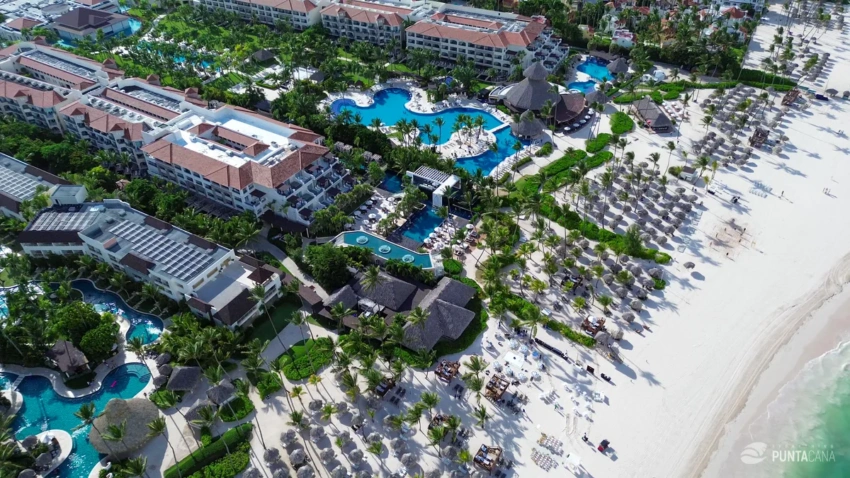
Aerial view of Punta Cana
Developing eco-friendly vacation homes in Punta Cana presents the intricate challenge of balancing growth with environmental stewardship. The delicate ecosystems of the region, including mangroves, coral reefs, and tropical forests, require careful consideration in any development plan. Developers must implement sustainable practices that minimize habitat disruption and conserve biodiversity. This often involves conducting comprehensive environmental impact assessments before breaking ground.
Balancing Development: Key Considerations
| Consideration | Impact | Solution |
|---|---|---|
| Habitat Preservation | Protects local flora and fauna | Designate protected zones |
| Resource Management | Ensures sustainable resource use | Implement conservation strategies |
| Community Engagement | Fosters local support and cooperation | Involve community in planning |
2. Cost Implications for Builders and Buyers
The financial landscape of building and purchasing eco-friendly vacation homes is complex. Sustainable development often involves higher initial costs due to the use of eco-conscious materials and technologies. Builders must invest in renewable energy systems, sustainable building materials, and advanced waste management solutions. While these investments can lead to long-term savings and benefits, they can also deter potential buyers due to higher upfront costs.
However, the long-term savings on utilities and maintenance, along with potential tax incentives, can offset initial expenses. Buyers are increasingly aware of these benefits, leading to a gradual shift in market dynamics where the value of sustainability is recognized as a worthwhile investment.
3. Regulatory and Certification Processes
Navigating the regulatory landscape for sustainable development in Punta Cana is another significant challenge. Builders must comply with local environmental regulations, which can be stringent and complex. Additionally, obtaining certifications such as LEED (Leadership in Energy and Environmental Design) or BREEAM (Building Research Establishment Environmental Assessment Method) requires thorough documentation and adherence to specific criteria.
Certification not only validates the sustainability of a project but also enhances its marketability by assuring buyers of its environmental credentials. However, the process can be time-consuming and costly. It necessitates a deep understanding of both local laws and international standards, often requiring collaboration with legal and environmental experts.
Despite these challenges, the pursuit of sustainable development in Punta Cana remains a priority for many developers. The commitment to preserving the natural beauty of the region while meeting the needs of a growing tourist population underscores the delicate balance required in this endeavor.
Future Trends in Eco-Friendly Vacation Homes
The future of eco-friendly vacation homes in Punta Cana is not just promising but is set to redefine the landscape of sustainable tourism. As the environmental movement gains momentum, these vacation homes are evolving to meet the expectations of the modern, eco-conscious traveler.
1. Technology Integration
Technology is playing a pivotal role in enhancing the sustainability of vacation homes. The use of smart home systems is becoming increasingly widespread, offering not only convenience but also significant energy savings. These systems allow homeowners and guests to control lighting, temperature, and even water usage through their smartphones, optimizing resource use without compromising comfort.
In addition, the integration of renewable energy technologies such as solar panels and wind turbines is expected to become more prevalent. These advancements not only reduce the carbon footprint of vacation homes but also align with the global push towards renewable energy sources. Furthermore, innovations in battery storage technology are making it easier to store and utilize solar energy more efficiently, providing a reliable power supply even during cloudy days.
2. Increasing Demand for Minimalist Designs

Punta Cana
The trend towards minimalist design is taking center stage as more travelers seek simplicity and functionality in their vacation accommodations. Minimalist architecture not only allows for a cleaner aesthetic but also supports sustainability by reducing excess and focusing on essential features.
This trend is complemented by the use of natural and locally sourced materials that blend seamlessly with the surrounding landscape. The minimalist approach also encourages the use of open spaces, maximizing natural light and ventilation, which further contributes to energy efficiency. These designs are particularly appealing to those looking to escape the clutter of urban life and reconnect with nature.
3. Expansion into Other Regions
While Punta Cana is at the forefront of the eco-friendly vacation home movement, other regions are beginning to take note and follow suit. This expansion is driven by the success and popularity of sustainable practices observed in Punta Cana.
As the demand for eco-friendly accommodations grows, neighboring Caribbean islands and even locations in Central and South America are looking to replicate this model. The emphasis on sustainability is not only appealing to tourists but also benefits local economies by promoting green building practices and fostering a culture of environmental stewardship.
Our Best Villa Rentals in Punta Cana
Experience the pinnacle of sustainable luxury with our exclusive selection of eco-friendly villas in Punta Cana. Each property is thoughtfully designed to minimize environmental impact while providing the utmost comfort and style.

Huge Luxury Cap Cana (Las Palmas) Golf Villa for Rent - Chef, Butler, Maid, 2 Golf Carts, Jacuzzi, Semi-Olympic Pool
from $3744 night Read more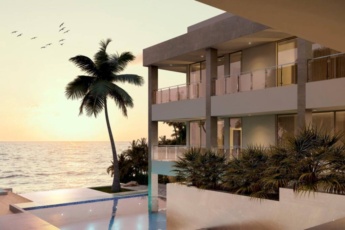
Brand-New Oceanfront Luxury Cap Cana 10BR Villa - Private Beach, Full Staff, Home Theater
from $8237 night Read more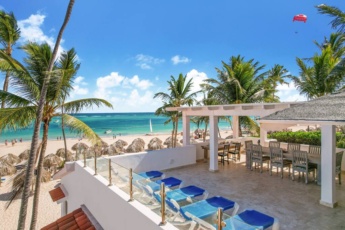
New Bávaro Beach Beachfront Condo for Rent - Stunning Ocean View, Housekeeper & Rooftop Terrace
from $811 night Read more
Luxurious 5-bdr Villa at Casa de Campo - With Pool, Jacuzzi, Games, Hibachi Grill, Staff
from $1685 night Read moreThe rise of eco-friendly vacation homes in Punta Cana is a testament to the region’s commitment to sustainability and innovation. As these trends continue to evolve, they promise to deliver unforgettable experiences for travelers while preserving the natural beauty of Punta Cana for generations to come.
Frequently Asked Questions
What makes a vacation home in Punta Cana eco-friendly?
Eco-friendly vacation homes in Punta Cana are designed to minimize environmental impact. They typically utilize sustainable building materials, incorporate renewable energy sources like solar panels, and use water conservation systems. Additionally, these homes often feature energy-efficient appliances and support local biodiversity through native landscaping.
Why are sustainable vacation homes becoming popular in Punta Cana?
The popularity of sustainable vacation homes in Punta Cana is rising due to increasing environmental awareness and demand for eco-friendly tourism options. Travelers are more conscious about reducing their carbon footprint and supporting conservation efforts. Punta Cana, with its natural beauty, provides an ideal backdrop for such initiatives.
Are eco-friendly vacation homes more expensive to rent in Punta Cana?
Eco-friendly vacation homes might have a higher initial cost due to sustainable technologies and materials. However, they can offer savings on utilities and longer-term maintenance costs. Rental prices can vary, and while some eco-friendly homes may be priced higher, many travelers find the benefits and unique experiences they offer to be worth the investment.
What are the benefits of staying in a sustainable vacation home?
Staying in a sustainable vacation home can enhance your travel experience by reducing your environmental impact.
Benefits include the use of renewable energy, water-saving technologies, and eco-friendly amenities. Additionally, these homes often provide a closer connection to nature and the local culture, as they support local communities and preserve the environment.
How can I find eco-friendly vacation homes in Punta Cana?
To find eco-friendly vacation homes in Punta Cana, look for listings on platforms that specialize in sustainable tourism. Search for homes with certifications such as LEED or Green Globe. Reading reviews and contacting property managers directly can also provide insights into the sustainability practices of the home.
What should I look for in a sustainable vacation home in Punta Cana?
When looking for a sustainable vacation home, consider features like solar power systems, rainwater collection systems, energy-efficient appliances, and sustainable building materials. It’s also beneficial if the property supports local conservation efforts and has a minimal environmental footprint.
Are there any specific regulations for eco-friendly building in Punta Cana?
Punta Cana has begun implementing regulations to encourage sustainable building, focusing on energy efficiency, waste reduction, and water conservation. However, specific regulations can change over time. It’s advisable to check with local authorities or consult a professional for the most current information on eco-friendly building regulations in the area.
How do eco-friendly vacation homes contribute to local communities in Punta Cana?
Eco-friendly vacation homes often benefit local communities by using locally-sourced materials and labor, supporting local businesses, and conserving natural resources. They may also engage in community projects and promote cultural preservation, enhancing the overall well-being of the area.
